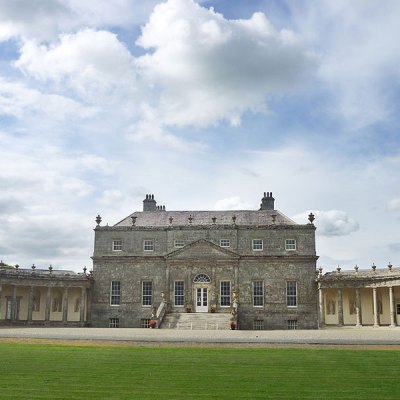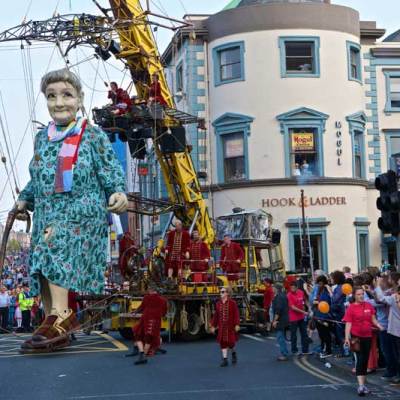The rediscovery of James Latham (c. 1696–1747) and his oeuvre admirably illustrates the advances made in Irish art history over the past half century. For a long time almost the only information on the painter came from a brief entry in Walter Strickland’s Dictionary of Irish Artists published in 1913. Heavily reliant on a similarly short text written in 1796 by ‘Anthony Pasquin’ (a pseudonym of the painter John Williams), Strickland had to admit that while Latham ‘was the principal painter in Ireland for many years and had for his sitters many of the most eminent personages of his time, his works are now almost unknown except by mezzotints…’
How times have changed. In a new examination of Irish fine art during the early modern period can be found an essay by Jacqueline Riding devoted to Latham in which she notes that there are now over 100 portraits attributed to the artist. Some of these are discussed as Riding investigates what has more recently become known of Latham’s career and traces possible links between him and his English near-contemporary Joseph Highmore (1692–1780).
Riding’s engagement with the subject is of significance on a number of levels, one being that she is interested in placing Latham within a European context, examining his time in Antwerp and his likely contacts with artists in other centres such as London and Paris. The study of Irish art has frequently, and on occasion detrimentally, been preoccupied with establishing its ‘Irishness’, seeking those characteristics that make it different from anything produced elsewhere. The consequence has been a certain parochialism in outlook and also a denial of the fluidity of movement among artists and influences, most particularly between Ireland and its nearest neighbour.
Like a number of other contributors to this volume, Riding’s essay makes plain that traffic was constant across the Irish Sea. One theme emerging from many essays is that a potential new market, on the whole in Dublin but also elsewhere, lured many artists to Ireland, among the best known being Gilbert Stuart and George Chinnery. Before either of them made the journey, Francis Wheatley spent four years in the country. His 1780 canvas The Irish House of Commons is analysed by Fintan Cullen who teases out the political and social aspects of the painting. However, while Cullen discusses comparable work by other artists, surprisingly he does not consider the most obvious equivalent, Zoffany’s Tribuna of the Uffizi (1772–77) which dates from much the same period and features a similarly awkwardly shaped space into which too many figures have been crowded (as Sir Horace Mann noted of the Zoffany at the time).
Stuart, Chinnery, and Wheatley had all established reputations prior to coming to Ireland. Not so the country’s finest sculptor during the 18th century, John van Nost (1713–80), who settled in Dublin in 1749 and is discussed in another excellent piece by M.G. Sullivan. Although his family had run a successful workshop in London since the late 17th century, van Nost does not appear to have produced any significant work prior to his departure from that city. As Sullivan remarks, his subsequent career in Ireland begs the question how he was able ‘despite apparently arriving with little reputation, no wealthy patron and no particular commission, to create a sculptor’s career in Ireland in the 1750s and 1760s’.
It was not just any career but one which, with occasional setbacks, flourished – even if van Nost’s attested output remains relatively small. He benefitted from timing, arriving in Ireland just as an awareness of the need for an indigenous school of sculpture emerged, so that almost immediately patronage and commissions flowed from the Dublin Society. Established in 1731 ‘for improving Husbandry, Manufactures and other Useful Arts’, the society was linked with many of the country’s most affluent and influential citizens, and through his own early ties van Nost was in a position to receive offers from them for further work.
The importance of such support is well understood but further research remains to be undertaken on the broader relationship between artists in Ireland and their clientele during this period. If the former were accustomed to travel to Britain and beyond, so too were their patrons who, having seen what was being produced elsewhere, expected similar standards of excellence at home. The second half of the 18th century witnessed a residential building boom in both urban and rural Ireland: these houses had to be furnished with fine art and much of it came from abroad. If indigenous artists were to prosper, they needed to be as good as, if not better than, what was being imported. Hence Sullivan quotes the entrepreneur and theatre manager Benjamin Victor writing of van Nost in 1756 that he was ‘a greater master than Risbriac [sic], or Scheemaker [sic]; I will only except Roubiliac.’
This point about matching standards equally applies to art history. Just as formerly there was an excessive concern with identifying the Irish traits of Irish art, so the investigation was being undertaken almost exclusively by Irish scholars. It is therefore gratifying to see that in the present volume some of the finest texts have been contributed by non-national authors such as Riding and Sullivan. The more Irish art history is known outside Ireland, the better it is likely to be appreciated within a global context at home.
Irish Fine Art in the Early Modern Period: New Perspectives on Artistic Practice, 1620–1820, by Jane Fenlon, Ruth Kenny, Caroline Pegum, Brendan Rooney (eds.), is published by Irish Academic Press.
From the November issue of Apollo: preview and subscribe here.



